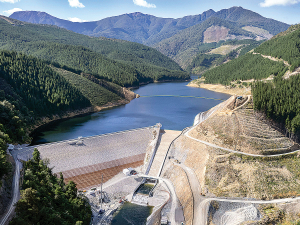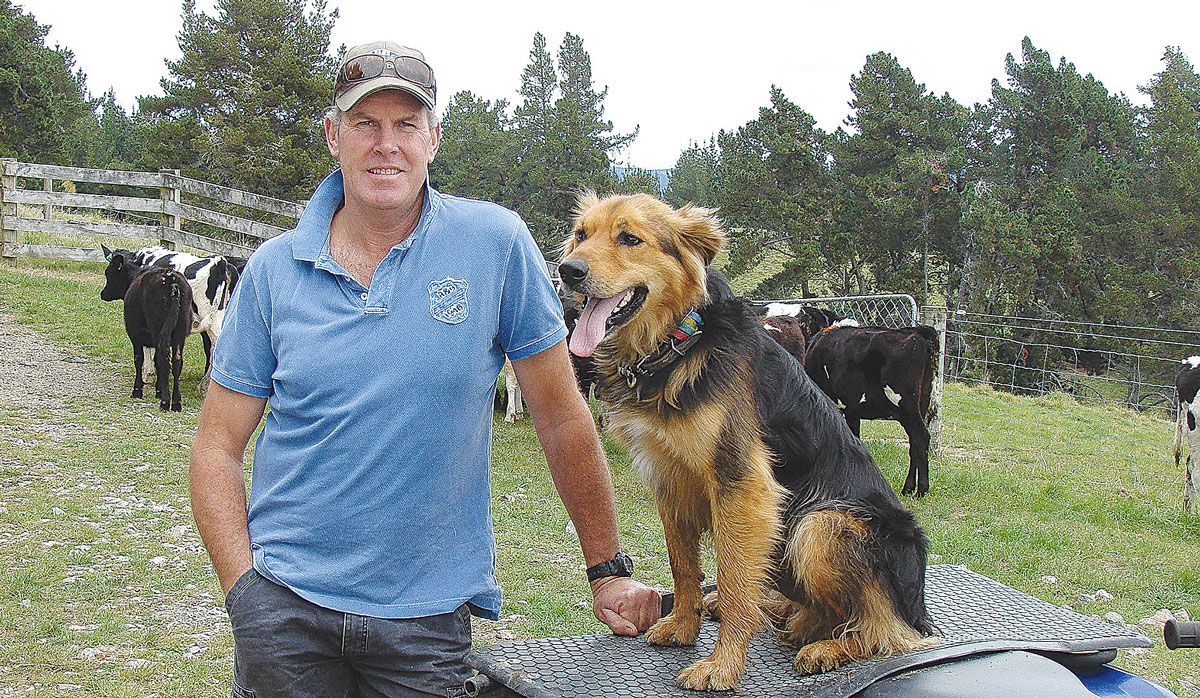King's birthday gong for King
There's a real need for people to push for, and on behalf of, New Zealand agriculture, says a farming leader recognised in the recent King's Birthday Honours List.
 The Waimea Community Dam in the hills behind Nelson is full for the first time. Photo Credit: Waimea Water
The Waimea Community Dam in the hills behind Nelson is full for the first time. Photo Credit: Waimea Water
Waimea Irrigators chairman Murray King has welcomed the effective completion of a major dam, which is expected to give irrigators and other users on the Waimea Plains reliability of supply for decades to come.
But the dairy farmer says the Waimea Community Dam is likely to hasten the eventual end of dairying on the plains, as irrigators go to more lucrative and intensive horticultural uses for the water.
“I can tell you, there are only three dairy farms actually on the plain and there’ll be lucky to be 600 cows. It’s a far cry from what it used to be,” King told Dairy News.
“It’s not cheap and so it will be used for the highest and best use.”
King and his neighbour Julian Raine – also a longstanding dam supporter and Waimea Irrigators board member – are co-founders of the Appleby Farms ice cream brand.
“One of the reasons for establishing the ice cream brand was to generate more from our milk to help cover the cost of the water because it’s relatively expensive water for growing pasture,” said King.
But they have already invested heavily elsewhere, notably Canterbury, for the bulk of their milk supply.
King said his own farm at Appleby is now “a bit of a lifestyle farm for us”.
“We won’t continue to do what we’re doing. We’re considering our options.”
King was commenting as the dam recorded a major milestone, being completely full and releasing water via its spillway for the first time on January 21.
It had been a long time coming, the project having its conceptual origins in the major drought of 2001-2021 when it became clear that the choice was finding a way to augment the Waimea aquifers in dry years or restrict water take by users – who had invested a lot of money and infrastructure in a premium fruit growing area.
By some estimates, the water was already overallocated by up to 70%, said King.
A long period of investigations and feasibility studies eventually led to the choice of a site in the Lee Valley, and the final construction of the dam, albeit two years behind schedule and, at $200 million, about twice the expected cost.
Built and operated by Waimea Water Ltd, which is 51% owned by the Tasman District Council and 49% by Waimea Irrigators, it will work by storing water in wet periods then releasing it as needed to maintain both river flows and aquifer levels on the plain.
The system is non-reticulated, all users taking water from the aquifer by bores.
King said it was not just for irrigation, but also for the health of the river, with some water reserved for river flushing flows, and the enhancement of urban water supplies.
He believed it was already having an impact, especially with people investing in higher-value horticulture on the prospect of reliable water.
There was also new urban expansion at Richmond mainly because the council had confidence in the ongoing water supply.
King said there was some frustration that the dam was two years late and more expensive than expected.
“There are a lot of learnings there for other water storage and irrigation plans and one of the biggest problems we have is certainty of success – people won’t invest if they think there’s a chance of failure.
 |
|---|
|
Murray King says Waimea Community Dam is likely to hasten the eventual end of dairying on the plains. |
“Another challenge is just around the availability of expertise that’s used to doing some of these projects. The dam is the biggest that’s been built in 30 years, so people who know how to do this, how to design such a thing and how to construct it, in many cases had to be pulled out of retirement or they had to be trained up.
“The problem is you’ve lost your continuity because there’s no project for them to go on to.
“These are long-term intergenerational projects. And in this case it will last well in excess of 100 years and the benefits will continue for years into the future, yet they’re based on a very short-term financing arrangement.”
Momentus Milestone
Waimea Water Ltd CEO Mike Scott said filling the dam was a momentous milestone for the project.
“We have been pleasantly surprised with the rain over the Christmas period and then again last week. This has led to the reservoir being filled and meant that our shareholders have not needed water released over the period to fend off any restrictions.”
Final engineering analysis and verification of dam performance would be carried out before some temporary pipes and facilities are removed and permanent pipework hooked up. Waimea Water Ltd expects the project to be completed and commissioned in March.
“We have been looking forward to this day for a long time and I thank the community and shareholders for their ongoing patience,” said Scott.
“We know that this dam is a very big, difficult and challenging infrastructure project for a small region to fund and undertake.
“We have a legacy project that can serve the community for over 100 years now with water security. We’re real proud of what we’ve achieved, particularly engineering our way out of very difficult geological challenges.”
Scott said the encountered geology was a big factor in the increased cost, along with living through the “strange times” of Covid and related inflation.
“Our balance sheet is more leveraged than we had anticipated, but it’s still in pretty good shape at around at 50% leverage.”
Arable growers worried that some weeds in their crops may have developed herbicide resistance can now get the suspected plants tested for free.
Fruit growers and exporters are worried following the discovery of a male Queensland fruit fly in Auckland this week.
Dairy prices have jumped in the overnight Global Dairy Trade (GDT) auction, breaking a five-month negative streak.
Alliance Group chief executive Willie Wiese is leaving the company after three years in the role.
A booklet produced in 2025 by the Rotoiti 15 trust, Department of Conservation and Scion – now part of the Bioeconomy Science Institute – aims to help people identify insect pests and diseases.
A Taranaki farmer and livestock agent who illegally swapped NAIT tags from cows infected with a bovine disease in an attempt to sell the cows has been fined $15,000.
President Donald Trump’s decision to impose tariffs on imports into the US is doing good things for global trade, according…
Seen a giant cheese roll rolling along Southland’s roads?